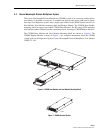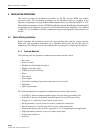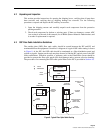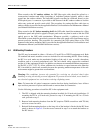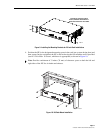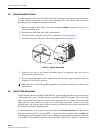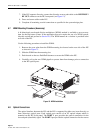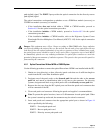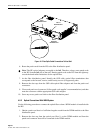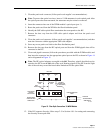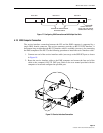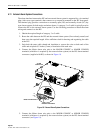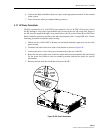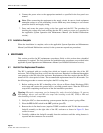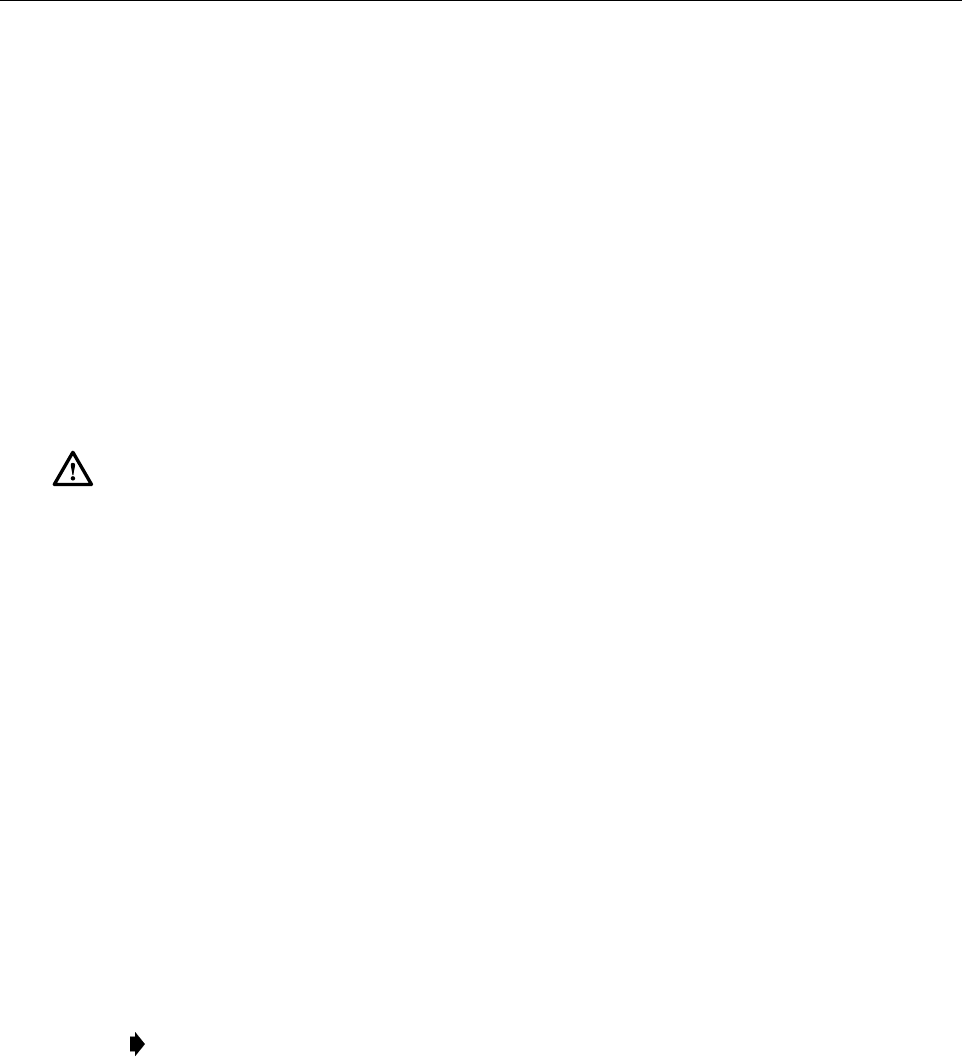
ADCP-75-169 • Issue 1 • June 2004
Page 15
© 2004, ADC Telecommunications, Inc.
path (uplink) signal. The PORT 3 port provides the optical connection for the diversity reverse
path (uplink) signal.
The optical connections are dependent on whether or not a WDM host module (accessory) or
CWDM host module (accessory) is installed:
• If the installation does not include either a WDM or CWDM module, proceed to
Section 4.8.1 for the optical connections procedure.
• If the installation includes a WDM module, proceed to Section 4.8.2 for the optical
connections procedure.
• If the installation includes a CWDM module, refer to the Digivance System Coarse
Wavelength Division Multiplexer User Manual (ADCP-75-142) for the optical connection
procedure.
4.8.1 Optical Connections Without WDM or CWDM System
Use the following procedure to connect the optical fibers when a WDM is not installed with the HU:
1. Obtain two (non-diversity) or three (diversity) patch cords that are of sufficient length to
reach from the HU to the fiber distribution panel.
2. Designate one of the patch cords as the forward path link and the other as the reverse
path link and attach an identification label or tag next to the connector. For diversity
systems, designate and label or tag a third patch cord as the diversity reverse path link.
3. Remove the dust caps from the HU optical ports and from the patch cord connectors that
will be connected to the HU.
4. Clean each patch cord connector following the patch cord supplier’s recommendations.
5. Insert each patch cord connector into the appropriate optical port as shown in Figure 14
and as specified by the following:
PORT 1 - Forward path patch cord
PORT 2 - Reverse path patch cord
PORT 3 - Diversity reverse path patch cord
Danger: This equipment uses a Class 1 Laser according to FDA/CDRH rules. Laser radiation
can seriously damage the retina of the eye. Do not look into the ends of any optical fiber. Do not
look directly into the optical transmitter of any unit or exposure to laser radiation may result.
An optical power meter should be used to verify active fibers. A protective cap or hood MUST
be immediately placed over any radiating transmitter or optical fiber connector to avoid the
potential of dangerous amounts of radiation exposure. This practice also prevents dirt particles
from entering the connector.
Note: To protect the optical receivers, insert a 15 dB attenuator in each optical path. When
the system is turned-up and tested, the attenuator may be resized or removed.



